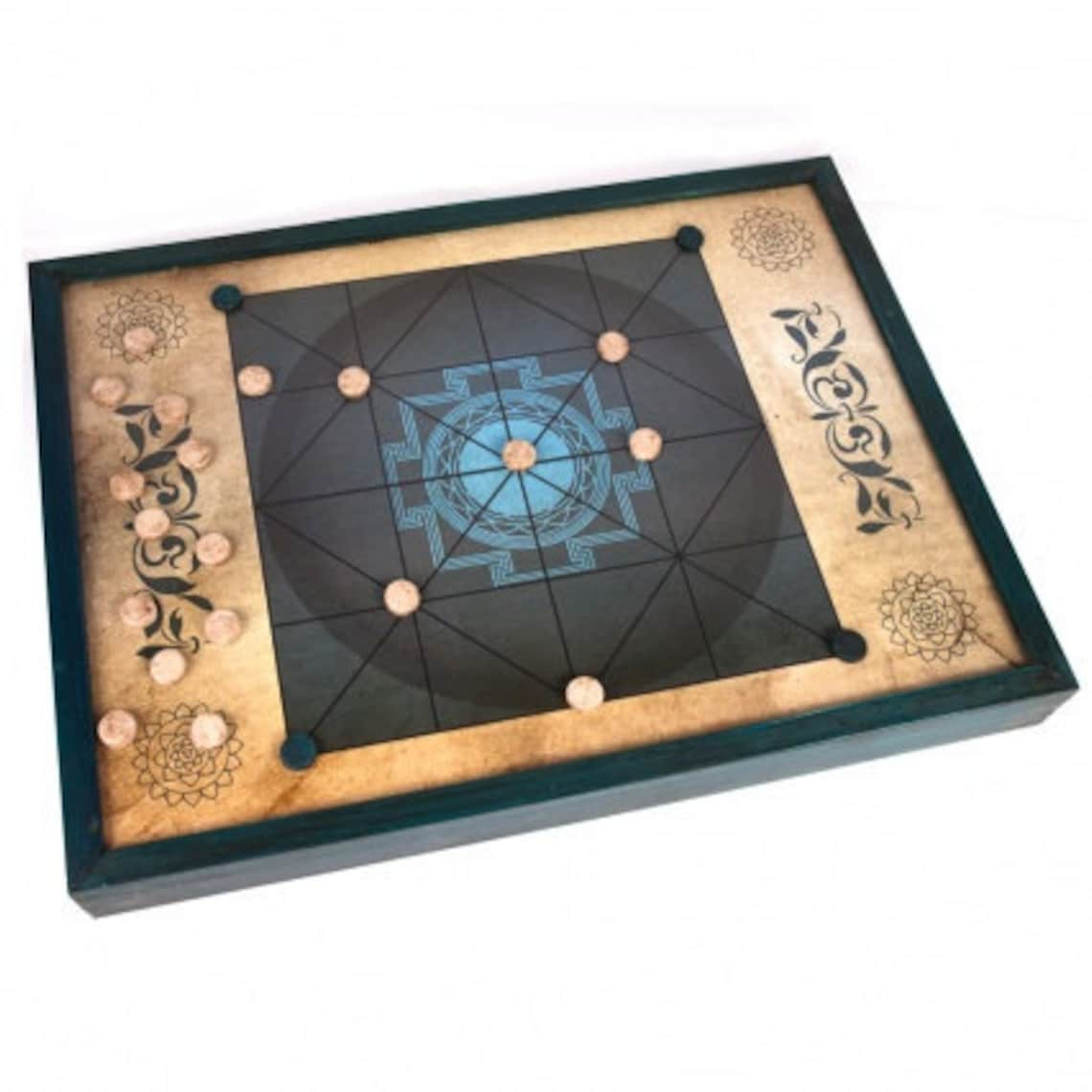Bagh Chal (1000)
History/Background:
The exact origins of Bagha-Chall are unclear, but it is believed to date back to the medieval Malla dynasty period in Nepal (1200-1769 AD).The name “Bagha-Chall” comes from the Nepali words “Bagha” meaning tiger and “Chall” meaning prey/victim. This refers to the basic gameplay which involves tigers “hunting” goats.Bagha-Chall was traditionally played by royalty and aristocrats in Nepal. It was seen as a game of strategy for intellectuals.Over the centuries, Bagha-Chall became more widespread among all classes and castes in Nepal. Today it is regarded as the national game of Nepal.
Popularity/Significance:
Bagha-Chall is embedded in Nepali culture. There are Nepali folk songs and poems that reference the game.It is commonly played during festivals and family gatherings, especially during Dashain.Nepali chess clubs and tournaments often feature Bagha-Chall along with chess.The game helps promote critical thinking and problem solving skills. It is sometimes used in schools to teach students strategy.
Game Components of Bagh Chal
How To Setup Bagh Chal
The game begins with the four tigers placed in the corners of the board. The twenty goats are held in reserve by the goat player. The goat player takes the first turn by placing one goat on any empty point on the board. This process continues until all goats are placed, after which the goat player moves the goats along the marked lines to adjacent empty points.[4′.
Gameplay Mechanics and Game Objective
Player Experience
**Bagh Chal** is a game of strategic depth but not overwhelming complexity. Players need to plan a few steps ahead but don’t have to ponder each move for minutes. The game is more about spatial awareness and anticipating the opponent’s next move. It’s easy to learn but hard to master, making it ideal for both casual and serious gamers..
Pros
Cons
Personal Thoughts on Bagh Chal
**Bagh Chal** is perfect for those who enjoy abstract strategy games without the intense mental strain of games like chess. It’s a great choice for couples or friends looking for a quick, strategic game that can be played virtually anywhere. By playing **Bagh Chal**, you also support the preservation of an ancient and culturally significant game from Nepal.[5′.
We are supported by our audience. When you purchase through links on our site, we may earn an affiliate commission, at no extra cost for you. Learn more.

